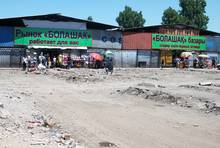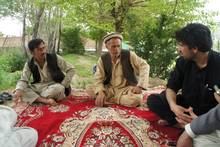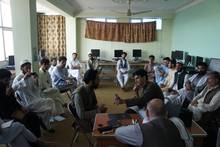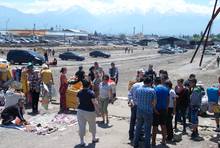What was clear from both the conference title and the rich menu of presentation topics is that the noun “entanglements” held high currency in the roll out of this timely forum, organized by the Center for InterAmerican Studies (CIAS) at the University of Bielefeld. More specifically, the presentations sought to highlight what Olaf Kaltmeier, in his welcome address, described as the importance of “entanglements” as a useful metaphor for rethinking Area Studies, which—in their case—needed to be an engagement in open-ended and contestable debates on the politics of entanglements in the Americas, simply because this “Area” is not limited to a given space, with a single story that can be easily identified and then, truthfully, re-told. To this end, “entanglements” was also viewed as an instrumental conceptual approach for understanding the social dimensions of the politics of entanglement, which included explorations of phenomena such as:
Crossroads Asia Takes an Inward Look
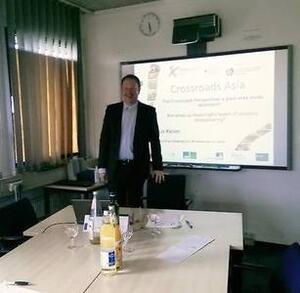
September 17, 2015
October 19, 2015
Reflections on Markus Kaiser's presentation of the Crossroads Asia network to the Advisory Board of the Center for Development Research, (ZEF), September 17, 2015.
One provocative question underlying Crossroads Asia's research concerns the relevance of ´area´ as a concept for understanding a globalized world. A central aim of the network has been to investigate and explain cross-area, crosscutting flows. This focus not only highlights the interconnectedness of regions and scales globally, but also sheds light on the contested and socially constructed nature of space.
To illustrate the above to a well versed audience, as yet unfamiliar with the network's research, Markus Kaiser presented an example of empirical research being conducted. The work package on the 'Social and spatial transformation of trade locations and target locations of educational migration' focuses on an investigation of places, rather than an area. Places are conceived by researchers Andreas Benz and Henryk Alff as being nodes of activity, defined processually and relationally as a crossroads of actors within far-reaching, intertwined networks. The Barakholka-Bazaar in Almaty, Kazakhstan, for example, is constantly being reconstructed as both a physical and a symbolic space, and is best understood as an interplay of socio-spatial mobility (of people, goods and ideas) and fixidity (security, as well as social and spatial boundaries).
The discussion following this short introductory presentation was mainly focused on the conceptual, semantic and institutional challenges that Areas Studies scholars face, including the difficulties in any endeavor to rethink Area Studies.
1. The role of “area”, place and scale in rethinking Area Studies
The concept of “area” spans different scales and semantic fields and should therefore not be rejected, but rather “rethought”. Furthermore, the continuing relevance of place for socio-spatial phenomena and for empirical research should be taken into consideration. The analysis of flows requires the acknowledgement of their localization between nodes as determining their very characteristics. Areas therefore retain their relevance at a particular scale, and the precise theorization of scales is essential to the study of complex (im)mobilities. Scale in turn is relevant as a social, geographical, but also a temporal unit.
2. The context of academic research in the field of Area Studies
Although the relevance of Area Studies may be challenged by academics, private and geopolitical interests often still prevail in directing the funding towards a classic understanding of area. The funding, conceptualization and implementation of Area Studies research is still driven largely by geopolitical and private interests. At the same time, there seems to be a misunderstanding of Area Studies today as simply bringing together specialists from different disciplines working in the same geographical region. Area Studies should be understood more holistically, as practiced by specialists with a well-rounded, multidisciplinary expertise on a given region or area. One interesting point mentioned was the very slow adaptation and development of German universities in this regard, mentioning also, that the German universities of applied sciences might seize the opportunity to create and develop new ways of doing Area Studies.
Conclusions from and for Crossroads Asia
As the case studies demonstrated, the different methodological approaches applied by Crossroads Asia researchers have contributed to understanding processes of migration across and along borders (flows of people, ideas and goods) and at the same time contributed to the rethinking Area Studies debate, especially in the fields of sociology, anthropology and linguistics.
In this context, the ZEF Advisory Board recommended that Crossroads Asia could benefit from an increased interdisciplinarity by including more economic perspectives in its research. The integration of this perspective would yield great improvements for the understanding of socio-spatial complexities in Area Studies. Furthermore, it is particularly important to conceptualize the rethinking-Area Studies-debate in a broader context within social (and natural) sciences in general. The forthcoming Crossroads Studies textbook is therefore meant to shed light on some of the recent criticisms to Area Studies and social sciences, while at the same time providing a (nonprescriptive) array of conceptual and methodological tools for undergraduates to work with.
Currents of Crossroads Perspectives
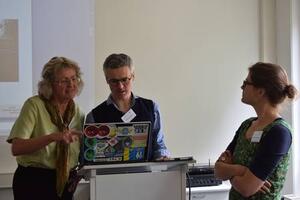
© Leibniz Center for Tropical Marine Ecology (ZMT) 2015
17 August 2015
Catherine Reynolds shares her impressions from a Crossroads Asia Workshop held at the Leibniz Center for Tropical Marine Ecology (ZMT) in Bremen on 28-29 July 2015.
The workshop “Tajikistan’s Episteme, Crossroads Asia & our Marine Future” brought together an assortment of social science researchers from diverse schools of thought, working on issues as disparate as farm debts in rural Tajikistan and the recuperation of mangroves in coastal Brazil. At first it was unclear whether the distinct schools represented would find collective streams of thought, but, indeed, unexpected synergies between Crossroads Asia perspectives and marine-related realities led to in-depth, novel exploration.
Held at the Leibniz Center for Tropical Marine Ecology (ZMT) and convened by Prof. Anna-Katharina Hornidge, the workshop took lifeworlds of coastal inhabitants as one starting point for analysis. From a Crossroads Asia perspective there was, on the one hand, a great deal of optimism about what marine research can offer the debate on rethinking Area Studies. Water lends itself to the notion of fluidity, and marine environments are intuitively better understood as consisting of flows rather than zones/areas. On the other hand, it became clear that container thinking is just as prevalent in marine research. Even the often used word “coastlines” implies a very limited and limiting notion of space. And while the assumption is often made that people living in physical proximity to the sea have a positive, meaningful connection to it; on the contrary, many of them have no relationship to it, or relate to it in an antagonistic, fearful manner. Taking anti-container thinking even farther, the workshop asked, why do we distinguish between marine and terrestrial spatialities at all? Coastal inhabitants can be so connected to water, as was pointed out by ZMT researcher Sebastian Ferse, that they barely distinguish between waterscapes and landscapes, rather perceiving coasts and identifying markers at sea (e.g., coral reefs) as unified bodies made up of both marine and terrestrial elements. Crossroads Asia researcher Epifania Amoo-Adare also cautioned against falling into an old Colonial trap: using rhetoric of empty, uninhabited spaces and unexplored frontiers and thereby reducing the sea and its inhabitants to something wild and distinctly ‘other’.
A theoretical framework with potential to alter the currents of the Crossroads Perspective was also introduced and discussed. Roland Lippuner from Artec in Bremen shared his understanding of the Anthropocene as a ‘second order’ concept for describing experienced reality. This framing concept offers an important counterpoint to the debate on rethinking Area Studies by conceptualizing space as finite, anchoring itself in the ‘limits to growth/planetary boundaries’ discussion. It also places primary emphasis on understanding social-ecological systems, diminishing the binary humans-nature. As Lippuner explained, the framework helps us move from a “geography of social systems” to an “ecology of society.” While acknowledging the analytical value of the Anthropocene framework, Katja Mielke from Bonn International Center for Conversion (BICC) / Crossroads Asia pointed out that theories, too, are based on constructions that reveal interests and displays of power; thus, she argued, we should be wary of taking any one overarching construct as our structuring principle.
Leaving the realm of theories and research perspectives behind, we returned to a subsequent Crossroads challenge: if we agree that spaces are socially constructed and lack fixed characteristics – and furthermore take the notion of the Anthropocene seriously and examine human and non-human elements – how do we begin our research? What do we take as the starting point of our analysis? And how should the analysis proceed? Here, the empirical research examples presented during the workshop provided an opportunity to reflect on and evaluate particular methodologies, including ‘follow the figuration’ and network analysis, as well as concepts like assemblages, entanglements and – of course – figurations. Most often the discussions led us back to a similar bottom line: no method can exclude a thorough evaluation of one’s positionality and a reflection on the relationality of researcher and research subjects.
Like the Entanglements Conference in Bielefeld, on which Epifania Amoo-Adare reported in a previous “Cross”-blog post, the intellectual exchange at the ZMT in Bremen brought up more questions than answers. How do cultural factors affect transmission of ideas? What is the relationship between mobility and lifeworlds? How do resources change the way that areas are perceived? How can we capture the notion of “resources” in a less anthropocentric way? The most thought-provoking of all the opened questions was for me: How would we perceive the world if we were fish? On the one hand, we might pay more attention to the 70% of the planet that is submerged under water. But, on the other, we might be even more inclined to swim in particular schools, limiting our explorations to a specific current.
Read the full workshop report here.
Entangled Epiphanies
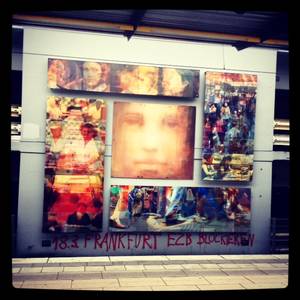
Photo © Epifania Amoo-Adare 2015
18 July 2015
Epifania Amoo-Adare shares her impressions from the "Politics of Entanglement in the Americas" conference, held between June 25-27, 2015 at Bielefeld University.
The recent Politics of Entanglement in the Americas conference, held from 25 to 27 June, was definitely not for the academic faint-hearted. It was a veritable treasure hunt for epiphanies hidden within an entanglement of a variety of presentations on a wide range of topics, the very animated discussions in each Q&A, and the numerous side-conversations that occurred during the well-deserved breaks. In many instances, even holding your breath was tantamount to losing out on some crucial point that highlighted the many different ways of looking at diverse and unfolding life-forms, entangled both within and beyond the Americas. The phenomena under scrutiny included the spaces and imaginaries of entanglements (e.g., social, economic, political and cultural); the formation and compositions of social movements and protest; the legacies of colonial entanglements and some of the current postcolonial and decolonial responses; the multiple flows and their processes (e.g., of people, flora, language, literature, music, identity and religion); and the politics of these multitudinous—need I state the obvious—entanglements.
1) power relations and flows, plus the strategies used to maintain or counter hierarchies, both from above and below (e.g., creation of indigenous, feminist and other networks);
2) stories, as diachronic projections to the past, and how they are narrated, plus by and for whom;
3) nodes, crossing places, or hot zones of politics that form within the uneven space of entanglements, while creating new geopolitical imaginaries and discourses linked to practices and the production of environments; and
4) the cultural political impacts of entanglements, for example, in the shape of language, religion and music.
From these multiple entry points, the conference revealed a plethora of material-semiotic entanglements that often raised more questions, in one’s mind, than answers. Questions such as when is an imaginary, an imaginary and who has the power to say it is such? How can solidarity movements be both open, rhizomatic (without beginning, end, or hierarchy), and yet, at the same time, protective of the dilution of core interests from expansion? What liberatory role—if any—can a tongue-in-cheek “playing the game” have in a politics of resistance? What are the necessary conditions and core principles (e.g., derived from indigenous, westernized and other knowledge sources) required to develop a new politics that includes a unified but representative vision of a people’s future?
Still, after a 21-hour, 3-day marathon of intellectual inquiry, I found myself with two moments of epiphany. The first being that, as argued by Funtowicz and Pereira (2015), we are still living and operating within a redundant Cartesian Dream, when we should instead be dismantling binaries (e.g., that of factual versus fictional texts), so as to reveal multifarious entanglements such as the social construction of knowledge and, consequently, the necessary deconstruction of certain narratives of power-knowledge. The second, in line with this idea of hierarchical splits, is that we also work in an academic world where the mind is reified beyond the body, as is the written form, over any other communication medium. And it is specifically this privileging of print matter—our use of 2-D text and images—that limits our explications and representations of 4-D, or even (according to theoretical physicists) 10-D, forms of multiple entanglements—within and through overlapping space-times.
Here, it is only right to end by invoking Ziauddin Sardar (2010, 2015), who insists that we are living in increasingly postnormal times, where chaos, complexity and contradiction challenge our notions of social science business-as-usual. In other words, we exist in an era that makes certain linear modes of thought null and void, especially for thinking about our common yet unpredictable present-futures. Realities such as these point out the significance of any kind of rethinking science policy and practice debate, including the ones about Area Studies. Roll in the prescience of the issues raised at the Politics of Entanglement in the Americas conference; that is, concerns also shared by the Crossroads Asia Network in its ongoing bid to flesh out a non-prescriptive Crossroads Perspective that provides a selection of conceptual and methodological tools that can be instrumental—alongside other approaches—for rethinking how to conduct research on fluid, dynamic and complex phenomena. This is a perspective that also seeks to highlight reflexive and pedagogical modes that enable researchers to be critically conscious of the power, privileges and dangers inherent in their academic positionalities, plus the limitations and fallibility of the very tools used; thus, consequently also of any interpretations, or “truth claims”, made on already and always shifting, epigenetically entangled existences (Lock, 2015).
References:
Funtowicz, S. & Pereira, A. G. (2015). “Cartesian dreams.” In A. G. Pereira & S. Funtowicz (Eds.) Science, philosophy and sustainability: The end of the Cartesian Dream (pp. 1-10). London: Routledge.
Lock, M. (2015). Comprehending the body in the era of the epigenome. Current Anthropology 56 (2), 151-177.
Sardar, Z. (2015). Postnormal times revisited. Futures 67, 26-39.
Sardar, Z. (2010). Welcome to postnormal times. Futures 42, 435-444.
Impressions on my internship: thinking about regions, boundaries and spatiality
23 April 2015
Lea Willeke was an intern at the Crossroads Asia coordination office from February to March 2015. She studies Geography at the University of Bremen.
My intention of applying to the social sciences department of ZEF was to gain a better understanding of how a research institute works. I was glad to find out that I would do the internship at the Crossroads Asia coordination office since my first thought was that this meant that I would learn about a ‘region’ I had not been working on during my studies so far. During my time in Bonn however, I learned much more than “about a ‘region’”.
There were many issues I had come across during my studies of Geography, which I was happy to see discussed or applied at Crossroads Asia. It was good to see that essentialist and Eurocentric knowledge production, which is still applied at some universities and disciplines in Germany, is questioned critically. Prior to the internship I did not think much about Area Studies and problems related to them. Of course the issue of container-thinking is discussed a lot in studies of Geography, but in my perception it is more criticized within the discipline or concerning nation-states than for constructed regions. I find the idea of a 'Crossroads' particularly interesting as it contains aspects of mobility and dynamics and it aims to combine concepts and methods from Area Studies and ‘systematic’ disciplines and thereby transcends epistemological boundaries or ‘containers’.
The workshop on March 6, 2015, at ZEF in Bonn, on developing a 'Crossroads Perspective' to Area Studies was a highlight of my internship. The network's ambition of having a fluid approach to concepts and methodologies, rather than defining new static notions or containers, was really interesting for me. For my further studies and research I would very much like to adopt the ways in which the researchers’ positionality is handled at Crossroads Asia. What also impressed me was the recognition during the discussion that people think in ‘containers’ in their everyday lives and that this has to be taken in mind while trying to transcend these ‘boundaries’ in research.
As my main task during the internship was to write a book review for the Crossroads Asia newsletter (No. 16 | April 2015), I was happy to get the opportunity to connect my present fields of interest to topics of interest for a Crossroads Perspective. When I wrote my bachelor thesis on territorial conflicts and national identity, with the Saharawi diaspora in Germany as a case study, I came across questions regarding the spatiality of diasporas: What are the borders of a diaspora? How do material and imagined borders relate to each other? Where can a diaspora be located? During the research there was much reference to the everyday usage of internet platforms for communication within the Saharawi diaspora. When I chose the book for the review, my intention was to further think around these questions of spatiality regarding cyberspace, which I missed at Crossroads Asia. I think these questions interlink very well with discussions inside the network regarding spatiality and flows of ideas.
Finally, I would like to thank especially the Crossroads Asia team at ZEF, for their support and their comments on the book review. Furthermore I would like to thank the IOA and the BICC as well for the opportunity to visit and to get to know their institutes, too.
Fieldwork in Khorassan, Sistan and Baluchestan (Iran)
30 October 2014
Shanaz Nadjmabadi shares her fieldwork experiences in Khorassan & Sistan and Baluchestan (Iran), June-August 2014 [in German]
Ziel der Feldaufenthaltes im Zeitraum Juli - August 2014 war die Fortführung der in 2011 und 2012 begonnenen Feldforschung, nämlich die Auswirkungen des Ausbaus der Transitstrasse “North-South Corridor” auf die regionale Entwicklung in den östlichen Provinzen Irans (Khorassan und Sistan-Balutschestan) zu erforschen, fortzuführen. Der Fokus der Forschung lag auch diesmal auf die Kontaktaufnahme und Durchführung von Interviews mit jenem Individuen und Gruppen, durch deren Aktivitäten die Mobilität von Gütern, Transportmitteln, Technologien, sowie der regionale Ausbau und die infrastrukturelle Fortentwicklung bewirkt wird. Die Besonderheit dieses Aufenthaltes wurde bestimmt von der Vermittlung vertrauter Personen, die es mir ermöglichten, einen der Fernfahrer auf seiner Fahrt von der afghanischen Grenze Taybad bis zum südiranischen Hafen Bandar Abbas (ca 1600 km) zu begleiten, um in einem Sattelzug 24 Tonnen Eisenerz, das für die Ausfuhr nach China bestimmt war, aus dem iranischen Eisenerzlager Sangan auf die Frachtschiffe im Persischen Golf zu bringen. Die Rückfahrt erfolgte auf derselben Strecke, diesmal mit nur 1 Tonne Fracht im Container: Plastikflaschen, die in einem der europäischen Länder hergestellt, nach Dubai ausgeführt und über die Transitstrasse Irans nach Afghanistan befördert wurden, um dort mit Coca Cola abgefüllt auf den Markt gebracht zu werden.
Die Erkenntnisse, die sich aus dieser teilnehmenden Beobachtung für mich ergeben haben, waren insofern von großem Nutzen, dass ich die bis dahin nur aus der Perspektive der Fernfahrer erfolgten Darstellungen über die Ereignisse auf und den Herausforderungen der Transitstrecke selbst überprüfen konnte. Darüber hinaus habe ich eine komplexere Vorstellung von den sich ergebenden Mobilitätsstrukturen und den Interaktionen der Akteure entlang der Transitstrecke gewinnen können.
Impressions from fieldwork in Almaty, Kazakhstan and northern Afghanistan
24 July 2014
Henryk Alff and Lutz Rzehak share impressions from recent fieldwork in Almaty, Kazakhstan and northern Afghanistan, respectively.
Click on the photos to enlarge the images.
Personal reflections on Crossroads Asia
Bonn, March 26, 2014
by Lema Jan
Lema Jan was an intern at the Crossroads Asia coordination office from February – March 2014. She is originally from Pakistan and studies Development Studies (MA) at the University of Duisburg-Essen.
For me joining Crossroads Asia was an interesting experience since the area of research is South and Central Asia, a region I belong to. With a Pakistani background studying Development and Governance in context of developing countries (with a focus on economics, politics and states) was interesting. But like many others, I thought of sociology and anthropology as completely different disciplines. For me these disciplines were rather read and viewed by people of different interests. However things are not as distinct as they seemed. The following paragraphs are splashes of thoughts either from home or the class as I sat here in the Crossroads Asia through one month of my stay.
As I started working I came across literature that I could perfectly relate to my personal experiences, either from social context or from recalling class lectures. Meanwhile I was amazed how I did not know many things about my own country which are either neglected or simply not enough emphasized on. The study on irrigation systems in Gilgit Baltistan was one such instance. It made me wonder how we don’t come across adequate mentioning of the place while studying about Pakistan’s history, culture and politics. Gilgit Baltistan is a unique place; it is administered by Pakistan but did not have an elected representation in the national assembly untill very recent. Matters like these we need to ponder upon as a state. Also the equation between the villagers was an insight into our own lifes - religious and political affiliations have such a vital influence on our relations within the community. Influences of political and religious leaders can drive our personal affiliations within the community as well as the functioning of our lives to the closest by modifying our thoughts about friends or religious piety and even “control over resources”.
In class we have always discussed why democracies are a better form of government for countless reasons. Democratic governments have proved to be more successful in delivering public goods. I had mixed thoughts about the idea for obvious reasons; coming from Pakistan, observing both democratic and autocratic regimes, I believed it was not big of a difference to the ordinary people. But I reconsidered my beliefs as I came across a study on cotton growth in Uzbekistan. It depicted another story. The study discusses how in Uzbekistan (governed by a single president with all powers in his hands since the foundation of the country) the production of cotton (as basically all kind of agriculture) is state-driven and people have limited authority to decide on their own way of production and income. It was a good example of how the lack of true democracy can affect the choices and lives of people at the utmost level.
Globalizationwas a concept I had a narrow understanding of, too. I believed it would contain the flow of technology and products and fast communication, but it is more than that. The flow of ideas exists not only in terms of economics, trade and politics but also socially and culturally. It is interesting how the flow of consumer goods across borders has influenced our position in the society and our ideas of modernism. Brands that drive our acceptance and place in the society today were once alien to us. I remember my friend who at one point, when we had no idea of brands, threw away her Louis Vuitton bag that she got as a present from someone abroad, thinking it was ugly. Today those once alien ideas of modernism surround us through so many channels of globalization. Now she would certainly pick the bag up, and it would be one of her most precious possessions.
Another study on translocation of the Tabighi Jamaa’t made me think about many things that have changed since the spillover of the conventional thinking of people doing tableegh. I recognize how the flow of ideas and mobility across regions and borders have changed the culture so much in the last ten years and how religion is confused with today’s culture and many things that were once an integral part of our culture are dying out because they are not a part of traditional religion (which is often confused with cultural practices of the Arabs in old days, too). The former white ‘sadar/chadar’ (cloth that women used to cover themselves outside homes) has today been replaced by an ‘Abaya’ because it comes from the Arab world and is considered more Islamic. ‘Nakreezy/ Mehendi’, the ceremony of the wedding which has been an enjoyable cultural tradition is dying out because is considered as un-Islamic by a certain mindset.
Today after a month of my stay at the Crossroads Asia coordination office I realize that these ideas are not as distinct as I thought they were. I find myself in the middle of this triangle that connects home, studies and Crossroads Asia at such different instances with diverse nuances that I would not have been able to think of before. I realize today, I am at a Cross Road.
"Power in aid relationships"
Bonn, February 24 2014
By Florian Schmit
Literature discussion of the Crossroads Asia Team Bonn
In our first Crossroads Asia literature discussion we talked about “Power in Aid relationships” by Cathy Shutt (2006). The article deals with the topic of power of and between people working in the broad field of development assistance and how power is exercised and received by different actors and in different contexts. The personal narrative is mainly based on Shutt’s own experiences in “Aidland”, a term she uses to describe the complex web of actors and institutions of the international aid system. Her conclusion is that even though most of them have honest intentions to ‘empower’ the people in recipient countries, it is quite common for people working in Aidland to copy the same unequal relationships which they actually want to overcome. The reasons for this can be insecurities due to unfamiliar working environments, cultural misunderstandings or the individual demand for ‘symbolic capital’.
Soon in the discussion the question was raised if Shutt’s article stated not only the obvious relations in development cooperation and whether her narrative therefore had a real additional value for the reader. But we soon agreed that it is always important to reflect on the social contexts in which one moves and this is especially true if someone works in a morally charged environment like Aidland. Even if it might be hard to draw practical conclusions from such insights it is important to be always aware of the contradictions which are connected to your own behavior. This is especially true for development assistance and – of course – for the field of development research, too.
Later our discussion’s focus changed and we started to talk about power relationships in academic contexts in general and between Area Studies and disciplinary fields of study in particular. Especially the students stated that it is obviously impossible to conduct proper scientific work in development research without disciplinary background as well as it is impossible to conduct field research without area-based-knowledge. Promising solutions to this dilemma seem to be the opportunities of the new BA-/MA –systems: Some students mentioned that from their perspective it seems to be very attractive to gain a lot of theoretical and disciplinary insight during the Bachelor studies while intensifying area based knowledge in the Master’s program – or vice versa. Finally we arrived at the conclusion that our “Rethinking-Area-Studies”-approach becomes more and more important not only with regard to the “crisis of the disciplines” but also in terms of the reasonable structuring of curricular programs and academic formats for students.
Wokół Hindukuszu - Around the Hindukush
Cracow, October 29-30 2013
By Lutz Rzeha
A conference at Cracow University
On October 29 and 30 the Institute of Oriental Studies at Cracow University held a conference on the cultural, social and political development in and around Afghanistan that featured some problems quite close to the core ideas of the Crossroads Asia project. Lutz Rzehak (Berlin Humboldt University) was invited to give the introductory lesson with a paper on ethnic and linguistic dynamics in modern Afghanistan. Interregional relations between Afghanistan and its neighbors were discussed by Agnieszka Kuczkiewicz-Fraś in her paper “Afghans in South Asia – history of contacts”, by Jakub Gajda in a paper titled “Afghanistan as a global area of rivalry - the role of regional powers”, and by Karolina Rakowiecka-Asgari in her paper “Afghanistan from the Iranian point of view”. The latter presentation had a special focus on the situation of Afghan migrants as well as on stereotypes and on the role of propaganda for creating and supporting these stereotypes in modern Iran. Social and political questions were discussed by Mikołaj Bolczyk (UJ) in his paper “A state without nation? Building Afghan national identity”. The lecturer has worked as an interpreter with the Polish troops in Ghazni province and his presentation was partially based on the experience he had made there. A very critical view at international development strategies in Afghanistan was presented by Khalil Ariyai who is an Afghan student in the local master program and who presented a paper titled “Afghan women at a glance: Past, present and future”. Mateusz Kłagisz who works as a lecturer of Persian and Pashto at Cracow University made the focus of his presentation on political propaganda in a paper titled “Poster as a message. About communist posters in Afghanistan”. Finally, Anna Krasnowolska who holds the chair of Iranian studies at Cracow University, gave a report of her first visits to Afghanistan in the 1970ies. The report was illustrated with numerous slides which she had taken during these years. The second day of the conference was devoted to questions of security in Afghanistan mainly and the presentations were given in Polish. Cracow has been an important center for Afghanistan studies for a very long time and the conference made clear that this tradition is still alive
The (non)arrival of three families – final destination or transit-stop in a long displacement?




Kabul, October 17th 2013
by Katja Mielke
I was talking with the Malek (tribal elder) of a group of Kuchi (i) from Laghman in his guestroom in a squatter camp in Kabul when Ahmadullah arrived. He was announced as ‘three families’ coming to make home in Kabul. Upon his arrival he was accompanied by a relative and another person, both from a camp near-by, also under the responsibility of the Malek. Ahmadullah had initially contacted the husband of his sister living in the other camp to find out whether there would be a place for his family and the families of his two sons. However, because all space turned out to be entirely occupied by families already, his relative suggested calling upon their Malek to find a solution. Since he did not find suitable space in any of the three camps he is in charge of, the Malek turned to the landlord – an influential rich person and member of the Provincial Council of Kabul who claims to own the land now occupied by the Laghmani Kuchis in three camps – to request some place and was offered a small plot on his land elsewhere for the period as long as the camps would be sustained (…) – against the suggested payment of 20,000 Afghani (around 260 Euro). However, with the flimsy excuse that Ahmadullah had arrived three days late and not, as initially announced, before Eid-e qurban (ii) , the landlord now refused to allow him to settle in and prepare a home for the three families. Having arrived hearing this news and sitting down in the guestroom with a somewhat bitter cup of tea, an atmosphere of gloom or helplessness was not perceptible though.
Ahmadullah says, “We lived 28 years in a camp in Alipur (Hazara Division), Pakistan. About five years ago we returned as registered refugees with UNHCR official cards to Laghman. We thought there is a government now and we could settle peacefully. But there is no living in Laghman. The Taliban dominate our district and if you don’t want to be killed, you have to carry a gun all the time. There is no earning. Our place is mountainous. We abandoned our livestock breeding at the time we left Afghanistan. The Soviet occupation had already started. I was about ten years old then, now I must be 44 approximately. In Alipur we lived the same lifestyle as the camp dwellers here in Kabul. We established a plastic and scrap business, picked up old plastic bottles, tin cans and shoes, and resold them to intermediary contractors. There is not much difference regarding the camps.”
“In Jalozai camp [Peshawar] we received monthly donations – flour and oil, some rice. The houses were prepared for us”, adds Ali Ahmad, the person from the other camp.
The Malek: “This camp is like a jungle. There are 57 families, we are better off here than in Laghman. We can have a daily income from going around with carts [karachi] selling things. The land we are sitting on belongs to the neighbouring school, the school master says. When the would-be landlord who claims to own the land with his four brothers once came in the beginning to ask for rent-payments and we denied it, he notified the municipality and asked to evict us. His family is very powerful; his one brother works in a foreign embassy, the other in a higher rank of one Kabul municipality department. I went here and there; the people around the Vice-President said they couldn’t help us because of the landlord’s influence. They suggested we appeal to the President. He referred us to the Ministry of Refugees and they issued a letter stating we can stay here until another place will be found for us. Of course we would be happy to have a proper place assigned. We did not show this document to the landlord. If you want to see it, I can show it to you any other day. Just today my wife went to visit some friends for Eid and the document is in the box she carries the key for. If more people from Laghman and our tribe want to come to Kabul we cannot accept them. There is no space here in Kabul. We try to assist close relatives. But the whole of Laghman wants to come. Since Dr Abdullah (iii) was killed five to six years ago we do not have a representative anymore. If he was alive we wouldn’t have these problems. We could be walking straight into his office and be sure he would help us. His sons don’t serve the people. Now we will give our votes to the person who promises to bring some benefit for us. Ashraf Ghani Ahmadzai (iv) is one of our people. If his campaigners appear here in our camp and promise help, we give our collective vote for him. If they do not come we will vote for whoever will do something for us.”
Postscript: The Malek spoke of the existence of 52 returnee and refugee camps throughout Kabul. I found another Kuchi-camp three streets further, behind the Shamshad Wedding Palace, later in the day. The photographs (1, 2) are taken at the fringe of the camp where kids were playing ‘house-fighting’ with their new toy guns, the classic gift for kids of all walks of life on the occasion of Eid (photograph 3). I did not take photographs inside the camp for reasons I find difficult to define. I found the living conditions too miserable and that any image of it would make me appear to seek some sort of ‘othering’. I suppose the inhabitants of the camp might have even agreed if I had asked to take pictures – possibly they would have hoped to receive some assistance from potential donors – but then again my own ‘habitus’ (shall I call it the ethical compass I was socialized in and couldn’t escape in this moment?) made me think that at least the adults being around might think I capture their miserable conditions and that they would feel ashamed of their situation. I am not sure if they would see it this way, though. I will feel better asking to document some of the accommodations for my research after having been there and having met them several times more.
...
(i)The term kuchi designates Afghan Pashtun nomads and semi-nomads, their estimated numbers are around 2.4 million. According to the Malek who identifies as kuchi without leading a (semi-)nomadic lifestyle anymore, there are now two types of kuchis in Afghanistan, the migrating ones and the ones bound to a place having lost everything.
(ii)Eid-e qurban is a three day holiday (festival of sacrifice) to commemorate the obedience of Ibrahim who was willing to sacrifice his son when ordered by God.
(iii) Dr Abdullah Laghmani was Deputy Head of the National Directorate of Security of Afghanistan (Intelligence) under Karzai before he was killed by a Taliban suicide bomber in Mehtarlam, the provincial capital of Laghman, on 3 September 2009. See www.nytimes.com/2009/09/03/world/asia/03afghan.html
(iv)Ashraf Ghani Ahmadzai is one of 27 officially registered candidates for the Afghan Presidential Elections on 5 April 2014. He has a background as international scholar (Political Science and Anthropology), served as Finance Minister in the Karzai Interim Government until 2004, and was appointed Rector of Kabul University. His official website can be found under: ashrafghani.com

